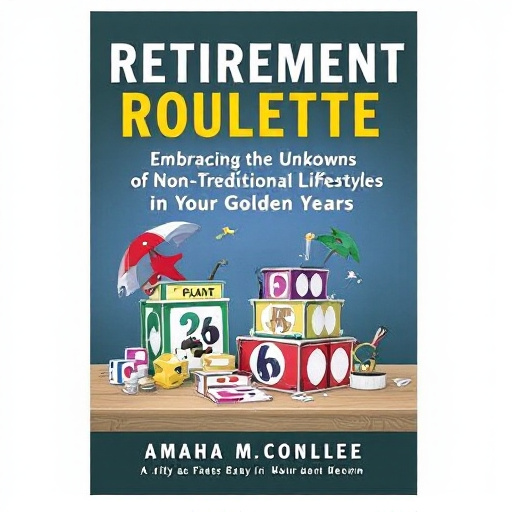Featured Articles
- "Beyond Savings: How Gardening and Hobbies Can Transform Your Retirement Plans"
- Reimagining Retirement: How Virtual Reality Could Transform Senior Living and Financial Independence
- "Rethinking Retirement: How Eco-Friendly Living Is Shaping Future Financial Planning"
- Retire in Style: Exploring the Rise of Sustainable Living Communities for Seniors
- "Retirement Reimagined: How Eco-Conscious Living is Shaping Future Financial Landscapes"
Top 8 Retirement Planning Tools Launched in the Last 5 Years: A Comprehensive Review and Ranking
Top 8 Retirement Planning Tools Launched in the Last 5 Years: A Comprehensive Review and Ranking
Top 8 Retirement Planning Tools Launched in the Last 5 Years: A Comprehensive Review and Ranking
Introduction
Retirement planning has evolved dramatically over the past five years, with technology ushering in a new era of accessible, sophisticated tools for future retirees. These platforms simplify complex financial decisions, integrate personalized data, and leverage AI to optimize retirement outcomes. In this article, we take a deep dive into the top 8 retirement planning tools launched since 2019, reviewing their key features, strengths, and weaknesses.
The retirement landscape today demands tools that are user-friendly yet powerful enough to accommodate different income levels, risk tolerances, and goals. From comprehensive software suites designed for advisors to individual apps crafted for DIY investors, the market has burgeoned with innovative options. Our rankings consider usability, technological innovation, cost, and real-world effectiveness, drawing on user reviews and expert analyses including data from NerdWallet and Investopedia.
By the end of this comprehensive review, readers will better understand which retirement planning tool fits their unique needs and how these platforms compare in providing actionable insights to secure financial independence after work life ends. Let’s begin by exploring the highly-rated solutions that have made waves recently.
1. SmartAsset Retirement Planner
SmartAsset’s Retirement Planner, introduced in 2019, quickly gained traction for its intuitive interface and robust data integration. The tool allows users to input detailed income, savings, and spending data to generate dynamic retirement projections. What sets it apart is its blend of financial advice with free, accessible calculators paired with a seamless link to local financial advisors for personalized planning.
Users appreciate the comprehensive approach, which not only projects retirement income but also assesses social security benefits, potential healthcare costs, and inflation scenarios. The ability to simulate adjustments like increased savings or delayed retirement age provides interactive goal-setting capabilities that empower users to strategize effectively.
While SmartAsset is free and user-friendly, some advanced investors or those seeking tailored tax optimization might find the planning depth somewhat limited. Nonetheless, its smooth onboarding and clear visualizations make it an excellent starting point for most individuals beginning retirement planning.
2. Blooom Retirement Optimizer
Launched in 2020, Blooom focuses specifically on optimizing employer-sponsored retirement accounts such as 401(k)s. Using AI and algorithmic analysis, it audits portfolios for asset allocation, fee structures, and risk level appropriateness. The goal is to maximize growth potential while minimizing unnecessary fees.
Blooom’s standout feature is its active management service, where a certified financial planner oversees your account adjustments monthly based on market conditions and goals. This hands-off approach appeals to users who want professional input without the traditional high advisory costs.
Although Blooom requires a subscription fee, many users find value in the personalized attention and improved portfolio performance compared to self-managed accounts. Critics note the service’s focus on 401(k)s excludes those relying heavily on IRAs or non-employer plans, representing a niche rather than a broad solution.
3. NewRetirement Planner
NewRetirement Planner is a comprehensive, web-based tool launched in 2019 that prides itself on detailed scenario planning. Unlike many platforms that offer simple calculators, it allows users to simulate complex financial situations including pensions, inheritances, and varying retirement spending patterns.
The platform’s strength lies in its depth, providing granular control over inputs such as tax rates, Social Security claiming strategies, and long-term care costs. It also includes educational resources to increase user financial literacy. Many users praise the planner’s ability to show “what-if” scenarios that provoke better strategic thinking.
Despite its power, the interface can initially overwhelm beginners due to the sheer number of options and detailed questionnaires. The subscription model is affordable, but prospective users should expect a learning curve to fully leverage the tool’s capabilities.
4. Personal Capital Retirement Planner
Personal Capital, relaunched with enhanced retirement features in 2020, integrates holistic wealth management with retirement-specific projections. The tool pulls data from all linked accounts to create a comprehensive financial overview that includes investments, debts, and cash flow.
This aggregation enables personalized retirement forecasts that adjust in real time as markets fluctuate or new data is entered. The platform also offers access to financial advisors, blending technology and human expertise. Users commend the clarity of net worth tracking combined with actionable retirement insights.
While there is no charge for using the planner, Personal Capital monetizes through wealth management services that may be pricey depending on portfolio size. Some privacy-conscious users express reservations about extensive account linking, but overall it is a trusted tool backed by solid technology.
5. Fidelity Retirement Score
Introduced in 2019, Fidelity’s Retirement Score is a streamlined, mobile-friendly tool designed to quickly assess retirement readiness. After entering essential data points, users receive a score from 0 to 100 indicating their preparedness relative to their goals.
The simplicity and speed of this tool are its key advantages, complementing Fidelity’s broader suite of financial products. Importantly, it provides tailored recommendations such as increasing contributions or tweaking asset allocations to improve the score over time.
The Retirement Score is most valuable as a quick checkpoint rather than an in-depth planner. It works best for Fidelity customers or those comfortable with the Fidelity ecosystem. Still, its intuitive design and free access make it a handy option for many prospective retirees.
6. Wealthfront Retirement Planner
Wealthfront, a pioneer in automated investing, introduced its Retirement Planner in 2020 to combine robo-advisor technology with predictive modeling. The tool uses Monte Carlo simulations to estimate the probability of portfolio success based on user-specific data.
The integration with Wealthfront’s investment accounts makes input seamless and automatic for users, while free access to tax-loss harvesting strategies enhances year-round tax efficiency. The planner supports multiple retirement goals simultaneously, such as early retirement or legacy planning.
While the platform excels in automation and ease of use, it’s geared primarily toward younger or mid-career investors comfortable with digital-only advice. Retirees needing human coaching might look elsewhere, but Wealthfront’s modern tech remains a strong contender in affordable retirement forecasting.
7. T. Rowe Price Retirement Income Calculator
Released in 2021, this calculator targets income-phase retirees or those nearing retirement. Unlike accumulation-focused planners, it emphasizes sustainable withdrawal rates and longevity risk management.
The tool helps users visualize how different withdrawal strategies might extend their portfolio over decades, accounting for market volatility and inflation. The interface is straightforward, with clear charts explaining potential outcomes.
It is ideal for users in the final 5-10 years before retirement or newly retired individuals who want to align spend-down plans with realistic assumptions. Fidelity and Vanguard offer similar tools, but T. Rowe Price’s version is praised for its detailed withdrawal options and educational support.
8. New Money Retirement Planner
New Money offers a fresh take on retirement planning with a focus on behavioral finance. Launched in 2022, it helps users identify biases and emotional spending habits that might undermine retirement goals. By combining financial projections with psychological insights, it fosters sustainable money habits.
The planner incorporates gamification elements to encourage consistent saving and periodic plan reviews, making the process engaging. Personalized nudges and reminders assist users in staying on track amid market uncertainty or life changes.
Though relatively new and less widely tested, early reviews highlight New Money’s unique approach as a valuable complement to traditional calculators. It appeals to those who recognize the importance of mindset in long-term financial success.
Ranking Summary and Recommendations
Evaluating these 8 tools reveals a spectrum balancing simplicity, depth, and personalization. For beginners or those seeking free, straightforward insights, SmartAsset and Fidelity Retirement Score stand out. Investors wanting AI-enhanced portfolio management may prefer Blooom or Wealthfront.
Users requiring detailed scenario planning with customizable inputs might gravitate toward NewRetirement Planner or Personal Capital. Meanwhile, retirees focusing on sustainable income will appreciate T. Rowe Price’s withdrawal-centric approach. For those looking to improve money behaviors alongside finances, New Money offers a novel solution.
Ultimately, no single tool suits every individual. A prudent strategy involves testing multiple platforms to find the right fit, potentially combining tools for comprehensive planning. Staying informed and adaptable will be key to securing financial freedom in retirement.
References
1. "Best Retirement Calculators & Tools" – NerdWallet, 2024.
2. "Retirement Planning Tools: A Comparison" – Investopedia, 2023.
3. User reviews and product websites for SmartAsset, Blooom, NewRetirement Planner, Personal Capital, Fidelity, Wealthfront, T. Rowe Price, and New Money, accessed 2024.




